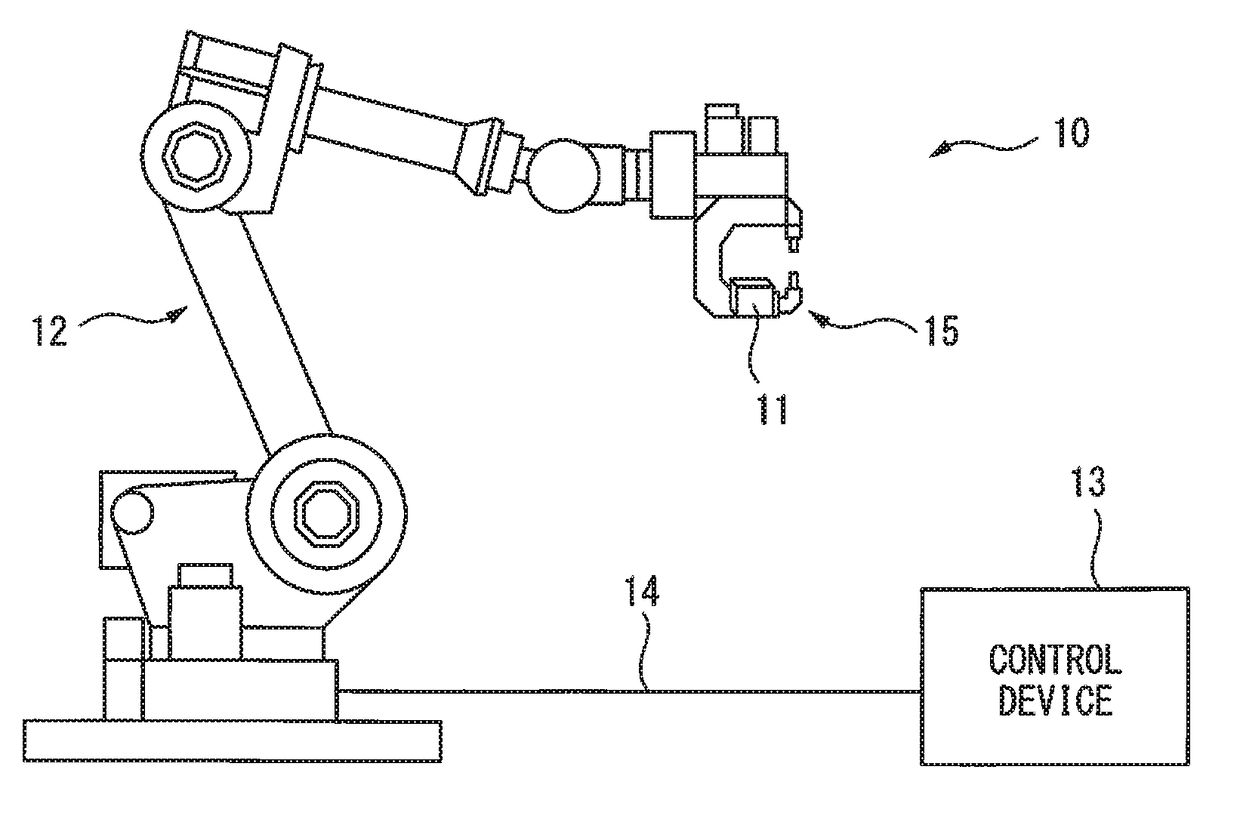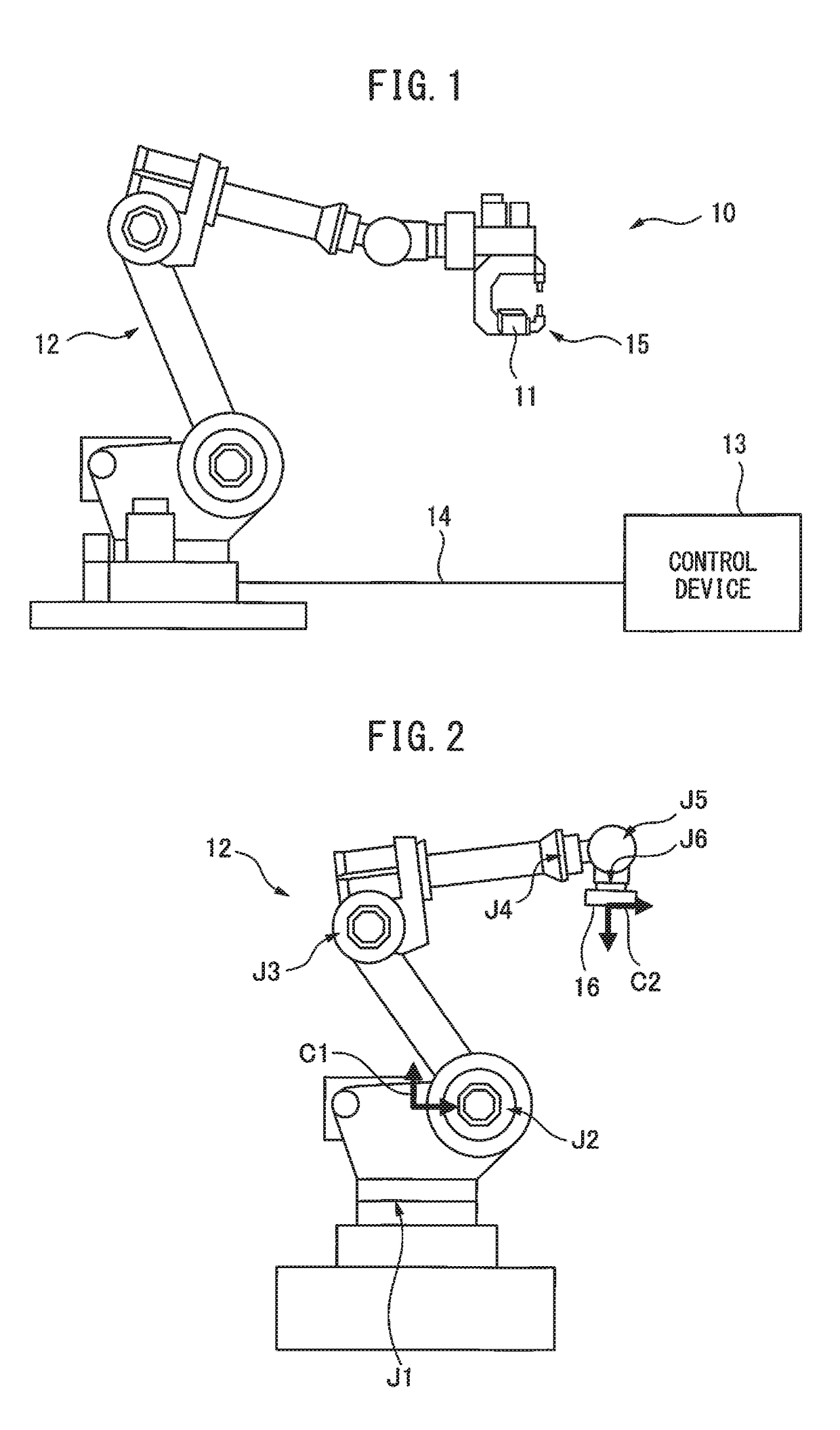Robot for controlling learning in view of operation in production line, and method of controlling the same
a production line and learning technology, applied in the field of robots, can solve the problems of requiring additional learning at a lower operation speed, unable to respond to a request to a production line, and unable to correct the wrong operation of an object or damage of the robot, so as to reduce the operation speed, and allow vibrations
- Summary
- Abstract
- Description
- Claims
- Application Information
AI Technical Summary
Benefits of technology
Problems solved by technology
Method used
Image
Examples
Embodiment Construction
[0012]An embodiment of the present disclosure will be specifically described below with reference to the accompanying drawings. In the drawings, the same or similar constituent elements are indicated by the same or similar symbols. Moreover, the embodiment described below does not limit the technical scope and the meanings of terms of the invention described in the claims.
[0013]FIG. 1 is a schematic diagram showing a robot 10 according to the present embodiment. FIG. 2 is a configuration diagram showing a robot mechanism unit 12 according to the present embodiment. As shown in FIG. 1, the robot 10 includes a robot mechanism unit 12 which is provided with a sensor 11 for detecting an actual position of a portion to be controlled as a target of position control, and a control device 13 which controls an operation of the robot mechanism unit 12 according to an operation program. The sensor 11 can communicate with the control device 13 through wired or radio communications. The robot me...
PUM
 Login to View More
Login to View More Abstract
Description
Claims
Application Information
 Login to View More
Login to View More - R&D
- Intellectual Property
- Life Sciences
- Materials
- Tech Scout
- Unparalleled Data Quality
- Higher Quality Content
- 60% Fewer Hallucinations
Browse by: Latest US Patents, China's latest patents, Technical Efficacy Thesaurus, Application Domain, Technology Topic, Popular Technical Reports.
© 2025 PatSnap. All rights reserved.Legal|Privacy policy|Modern Slavery Act Transparency Statement|Sitemap|About US| Contact US: help@patsnap.com



